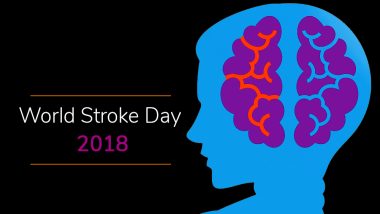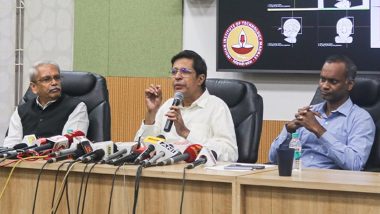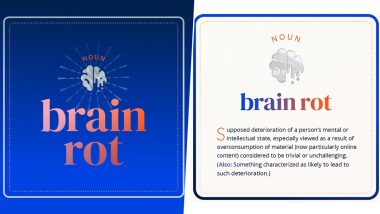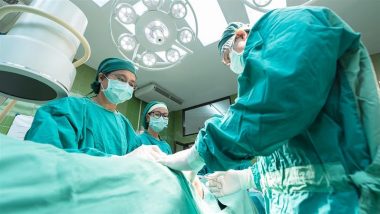When we hear that someone has suffered a “stroke”, we are often confused by what it means. Stroke is a dangerous medical condition where a part of your brain stops receiving blood. In the absence of oxygen, which is supplied by blood, brain cells die off or start getting damaged. Soon, it causes disability and death in the affected person. Stroke is also one of the most poorly understood medical problems, which becomes an impediment in its diagnosis and early treatment. So every year, on October 29, the world observes World Stroke Day to work towards a better understanding of the disease that claims millions of lives worldwide.
What is a Stroke?
According to Dr Nitin Dange, consultant neurosurgeon, Global Hospitals, Mumbai, a stroke is a medical condition resulting from reduced blood flow to the brain cells. “There are two main types of stroke: ischemic, caused by the lack of blood flow and haemorrhagic, caused by bleeding in the brain,” he says. “They result in part of the brain not functioning properly.”
What Are Its Causes?
Ischaemic strokes, which are the most frequent type, occur when a blood clot blocks off the flow of blood and oxygen to the brain. “These blood clots typically form in areas where the arteries have been narrowed or blocked over time by fat deposits known as plagues, called atherosclerosis,” says Dr Dange. What's a Silent Stroke?
Transient ischaemic stroke, a type of ischaemic stroke, is more like a sign that a severe stroke may occur in the future. "It is caused by a clot that enters the brain. The symptoms of this stroke are short-lived and it doesn't cause any lasting damage to the brain," says Dr PR Krishanan, a consultant neurologist from Fortis, Bangalore.
As you get older, the arteries get narrower. But Dr Dange says that over time, certain things can accelerate the process. Habits such as smoking and drinking, and underlying health conditions such as high blood pressure, obesity, high cholesterol and diabetes can worsen your chances of a stroke.
Haemorrhagic stroke, also known as cerebral haemorrhages or intracranial haemorrhages, are less common than ischemic strokes. “They occur when a blood vessel inside the skill bursts and bleeds in and around the brain,” says Dr Dange.
Haemorrhagic stroke is caused mainly by high blood pressure, which can weaken the arteries around the brain, making them prone to rupture.
Again, like ischaemic strokes, certain habits like smoking and drinking, lack of exercise, stress, etc. can increase the chances of haemorrhagic strokes.
“Sometimes, it’s also caused by a brain aneurysm or when a blood vessel ruptures in the brain,” adds Dr Dange.
What Are The Symptoms?
In the case of a stroke, timely action can make a lot of difference. That’s why medicos have devised an acronym FAST to help people recognise the symptoms of a stroke. Social and Emotional Support More Helpful to Stroke Patients Than Physical Rehabilitation.
F stands for ‘Face.’ In the case of a stroke, the person’s face becomes a clear indicator. “The person’s face may have drooped on one side. They may not be able to smile, or their mouth and eyes may have drooped to one side,” says Dr Dange.
A stands for 'Arms.' “The person with the suspected stroke may not be able to lift both arms and keep them there because of the weakness or numbness in one arm,” he says. To check whether its stroke, the person is made to hand both his hands up.
S stands for 'Speech.' The stroke may affect the person’s speech, making him or her slur. Their speech may either be garbled or incomprehensible, despite appearing to be awake.
T stands for 'Time', as in it’s time to dial the emergency number or seek treatment. “If you notice any of these signs of symptoms, immediately seek medical attention,” advises Dr Dange.
Who is At Risk?
According to National Library of Medicine, anyone with health conditions like high blood pressure, diabetes, heart disease (coronary heart disease) cardiomyopathy, heart failure, atrial fibrillation and brain aneurysm is at risk of stroke.
Habits like smoking and drinking also increase your chances of a stroke.
Age is a big factor. As you age, your arteries narrow, raising your risk. In India, around 1/5th of patients admitted for the stroke for the first time are less than 40 years of age!
Gender is another factor. At younger ages, men are more prone to strokes. However, women are more likely to die of stroke.
Women who take birth control pills are also at a higher risk of strokes.
Race and ethnicity play a big part. African Americans, Alaska Natives, American Indians, Asian Americans, Hispanics and Caucasians have a higher risk.
Personal or Family history of a stroke puts you at a higher risk. If you have suffered from one earlier, there is a likely chance of a repeat episode. Your predisposition towards stroke is higher if there is a family member who has suffered from a stroke.
Smoking and drinking habits also exacerbate your risk.
What Is The Treatment?
“Stroke is diagnosed through methods such as CT scan, ECG, MRI and blood tests,” explains Dr Krishnan.
To treat stroke effectively and to prevent long-term disability, specific treatment methods are recommended, depending on the type of the stroke. The treatment for one can become dangerous for the other.
To treat ischaemic strokes, medicines such as plasminogen activator, antiplatelet drugs and anticoagulants are prescribed. "Thrombolytic therapy is one of the treatments to lyse blood clots from the blood vessels, enhance blood flow and prevent tissues and organs from getting damaged. In addition, removal of clots by mechanical thrombectomy is very effective in selected patients," says Dr Krishnan.
To treat haemorrhagic strokes, first the site of the bleeding is identified. If the patient is on blood thinners, he or she is taken off them because the medicines can make bleeding worse.
For a haemorrhagic stroke, surgical intervention may be required sometimes.
What Are The Preventive Measures?
The old cliché, “Prevention is better than cure” rings true when it comes to stroke. If you belong to the high-risk category, eating healthy, exercising regularly, and avoiding vices such as smoking and drinking helps immensely.
“These lifestyle changes can reduce your risk of problems such as arterial clogging, high blood pressure and cholesterol,” says Dr Dange. “If you have already had a stroke, making these changes can reduce your chances of having another one in the future."
“A healthy diet can avoid stroke as it helps in maintaining low blood pressure and even controls a person’s weight as obese are more susceptible to stroke, if a person is diabetic he should manage his sugar level as it weakens the blood vessels over time. One should also quit smoking and alcohol consumption in order to avoid stroke, and always follow a regular exercise regime,” advises Dr Krishnan.
(The above story first appeared on LatestLY on Oct 29, 2018 11:18 AM IST. For more news and updates on politics, world, sports, entertainment and lifestyle, log on to our website latestly.com).













 Quickly
Quickly





















